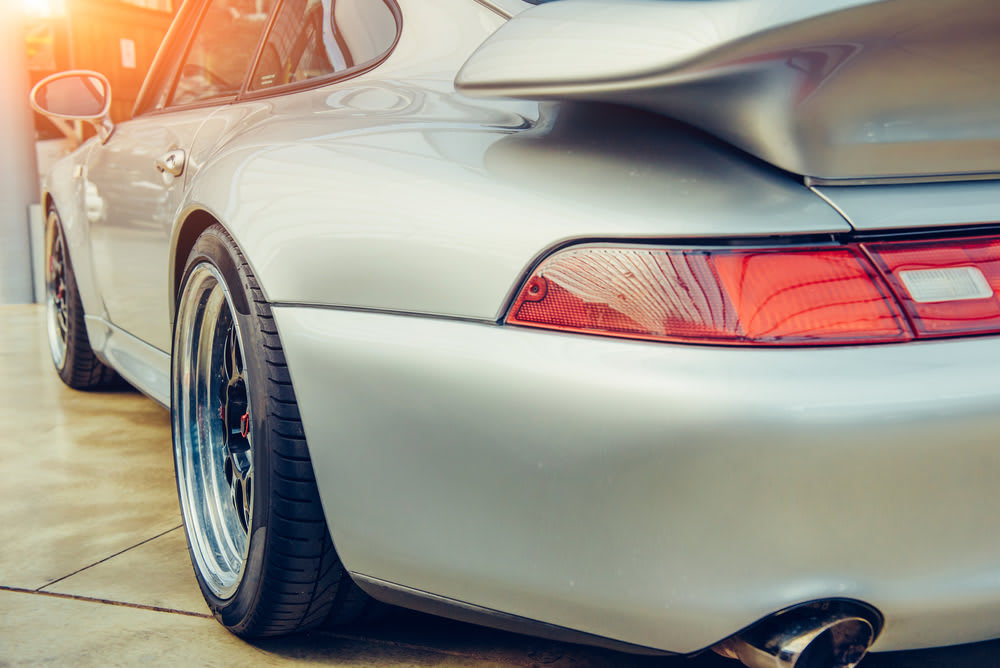

For the better part of the twentieth century, nearly every vehicle on the road had the engine sending power to the rear wheels. This arrangement makes a lot of sense to designers, with the rear wheels handling all of the power and the front wheels handling all of the steering. One system would not interfere with the other, theoretically making the vehicle perform better and handle better. While this arrangement is becoming less common, many vehicles still implement it with fantastic results.
How does it work?
The most common setup in rear-wheel drive vehicle involves having the engine at the front of the car connected to a driveshaft that sends power to the rear of the car. This arrangement dominated cars built in the twentieth century for several reasons:
Body-on-frame vehicles have more space under the vehicle because of the frame rails, making it more practical to run a driveshaft under the vehicle for power. Most modern cars are not body-on-frame, and generally have a lighter unibody design with a lower center of gravity.
As mentioned above, the rear wheels handling all of the power with the front wheels handing all of the steering is straightforward, meaning it was cheaper to manufacture and simpler to service.
The engine at the front of the vehicle put something substantial in front of the driver and passengers if the vehicle hit something head-on.
Performance vehicles often use rear-wheel drive for consistent and sharp handling. In mid-mounted and rear-mounted engine vehicles, power usually goes to the rear wheels to save weight and put the heavy engine over the driven wheels for better traction. The fact that rear-wheel drive has been used for so long means the technology has improved dramatically over the years. Issues like over-steer (the rear of the vehicle losing traction in a turn) and poor traction in slick conditions are less frequent in modern rear-wheel vehicles.
The drivetrain
By definition, rear-wheel drive vehicles send all of their power to the wheels in the rear of the vehicle. But what path does it take to get there?
It starts at the engine. Combusting fuel in the cylinder pushes the pistons to spin the crankshaft. This turns the explosive energy in the fuel into rotational energy.
-
This energy goes into the transmission. The transmission takes the raw power from the crankshaft and applies it to different gear ratios, with each different ratio referred to as a “speed.”
- Low engine speeds usually makes more torque and lower vehicle speed to make handling effective at slow speeds or steep inclines.
- High engine speeds usually makes more horsepower, allowing for the vehicle to drive at increasingly higher speeds until the redline is hit in the final gear.
The transmission uses engine power to spin the driveshaft. The driveshaft is connected to the transmission at one end and the differential at the other.
The differential sends power out to the wheels via a series of gears. Very basic differentials send power to just one wheel while more advanced differentials send only the appropriate amount of power to each wheel. Wheels must be able to spin at different speeds in order to maintain traction around corners.
The wheels are the end of the line on the drivetrain. They are spun by axles extending from the differential. Tires mounted to the rim of the wheel grip the ground and ultimately decide how much of the power makes the vehicle move forward.
What vehicles use rear-wheel drive?
Large sedans and family cars: While many large cars and vans use front-wheel drive or all-wheel drive, many sedans and wagons mid-size and larger come in rear-wheel drive.
Trucks and SUVs: Most body-on-frame trucks and SUVs use rear-wheel drive as standard. Most will have an option for four-wheel drive. Commercial trucks and vans use rear-wheel drive as well.
Sports and performance cars: Many car enthusiasts still prefer rear-wheel drive vehicles for their handling characteristics and power delivery.
Will rear-wheel drive perform the way I need it to?
Currently, rear-wheel drive is most often seen in performance-oriented vehicles. From the Scion FR-S to the astounding feat of engineering that is the McLaren P1, rear-wheel drive provides the needed performance and handling manufacturers want in their cars. If one of the fastest cars ever made, using only the latest in automotive technology and a hybrid drivetrain, implements rear-wheel drive, then there are obviously advantages to rear-wheel drive when pursuing speed.
In some situations though, rear-wheel drive may not be the best choice. In areas with less stable road surface or snowy climates, an all-wheel drive platform could be more ideal. Cars and trucks that are rear-wheel drive with the engine at the front often suffer from poor traction in slippery conditions. Some drivers add weight to the rear of the vehicle to put more mass over the rear wheels. Issues like oversteer are exacerbated by slippery conditions as well.
With high-performance cars like the Ferrari F12 TDF using rear-wheel drive with great results, it is clear to see that there is a place for the drivetrain arrangement to be taken to new heights. While it doesn’t make sense for every car, rear-wheel drive is standard in many applications for a good reason.



